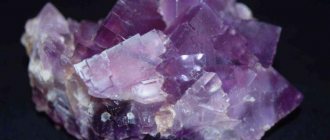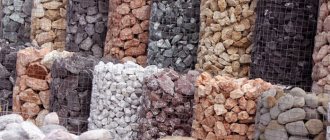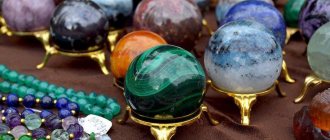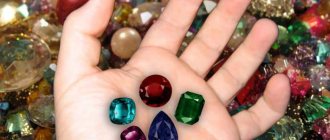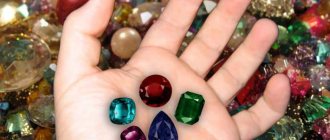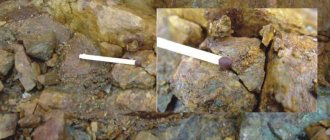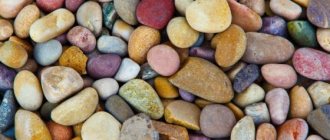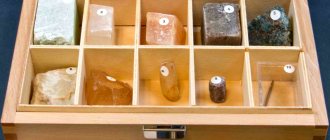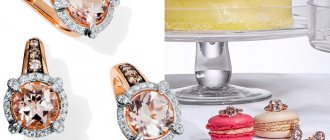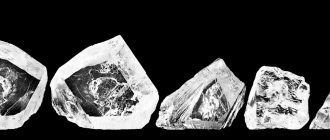The world of stone is vast and fabulously interesting. Amethyst and agate, rock crystal and granite, malachite and pebbles on the shore have their own history. Man has been using stone since time immemorial. At first it served him as a tool. Subsequently, the amazing properties that this material possesses contributed to the fact that it began to play a huge role in the development of human culture.
Using a sharp stone, primitive man cut into pieces the carcass of the animal he had killed. People made spatulas, scrapers and bowls from the same material. Taking flat fragments, they ground the grains, and made jewelry from shiny and colored stones. Somewhat later, the scope of this material expanded. The stone began to be used in architecture and construction, in decorative arts and sculpture, as well as in jewelry.
Today, a person cannot even imagine his life without this material.
Stone and mineral - principles of difference
As a rule, we consider these two words to be synonyms. In principle, a stone can be called a mineral, and vice versa. This will not be a gross mistake. However, these elements still have several significant differences by which they are distinguished and classified.
A mineral is a chemical substance of one kind or another that has a crystalline structure. Sometimes its composition may have slight differences despite having a similar structure. In such cases, varieties of minerals are distinguished by color or other characteristics.
As for stone, this concept is broader. It means either a mineral or a solid rock of natural origin.
To better understand the essence of the difference, it is necessary to take into account factors such as:
- The existence of rocks and minerals. In mineralogy, this classification of stones is considered basic. It is based on the conclusion that minerals are substances with a homogeneous structure. Rocks or simply stones, on the contrary, are heterogeneous in their composition.
- Minerals are used in jewelry. Stones, as a rule, are used as a building material.
- Esoterics considers minerals as objects that have magical properties. Stones don't have them.
- Minerals are always more expensive. Their cost is sometimes thousands of times higher than the price of stones. There are much fewer minerals in nature, since in its pure form any substance is much less common than material with impurities. Minerals look more beautiful. However, the practical benefits of rocks or ordinary stones are much greater.
- Minerals are products of nature found directly in the soil. That is why rhinestones and shellby obtained in the laboratory cannot be classified in this category. You can call them stones.
As a rule, minerals are homogeneous. Impurities present in a crystal are called inclusions or defects. Because of them, the price of the product is significantly reduced. The mineral we call stone is best completed with an adjective. For example, “precious”.
Research methods
The use of new research methods , spectral, x-ray and x-ray chemical equipment makes it possible to determine not only the main composition of minerals (main components), but also minor impurities, which is very important.
It is also possible to establish in what form the impurity elements are: they fill spaces between the main atoms in the mineral lattice, or replace some atoms, or, finally, form microminerals - foreign, captured inclusions. The mineral kingdom is complex, and much remains to be done to study it.
Classification of stones
By what criteria are these substances divided? It is worth noting that there is no single classification of stones. Jewelers divide them according to one criteria, mineralologists and geologists - according to others, and sellers are primarily interested in the cost of the goods they offer.
The first attempt to organize the stones was made by professor of mineralogy Kluge Gürich. Bauer brought greater clarity to this issue in 1986. He divided gems into three categories - precious, ornamental, and organic. Rocks were not included in this classification of stones. In turn, these categories are divided into orders. However, at present, as a rule, they use the classification of stones proposed by V. Ya. Kievlenko. It includes the following groups:
- Jewelry stones. This category includes the most beautiful and expensive representatives, which, in turn, are divided into 4 orders. The first of them contains ruby and sapphire, emerald and diamond. The second includes black opal, non-blue sapphire, tadyite and alexandrite. The third order includes red tourmaline and moonstone, rosolite and topaz, aquamarine and fire, as well as white opal, spinel and demantoid. The fourth includes citrite and almandine, pyrope and chrysoplase, amethyst and peridot, turquoise and beryl, as well as artificial zircon and varieties of tourmaline.
- Jewelry and ornamental stones. They are also distributed over orders of magnitude. The first of them contains rock crystal, bloodstone hematite and rauchtopaz. The second order includes colored chalcedony and agate, rhodonite and amazonite, cahonite and heliotrope, ionizing obsidan and rose quartz, labradorite and ordinary opal, spar and white porite.
- Ornamental stones. Not only jewelry can be made from them. They often serve as material for various interior items. These include jasper and onyx, ganite and fluorite, obsidan and colored marble.
Sometimes a simplified or everyday classification is used to group stones. She divides them into precious and semi-precious, as well as semi-precious or ornamental.
First-class minerals include: sapphire and diamond, chrysoberyl and ruby, emerald and alexandrite, euclase, spinel and palus. Among the precious stones, those that belong to the second grade are also considered. Among them: zircon and opal, almandine and blood amethyst, phenacite and demantoid, red tourmaline and beryl, aquamarine and topaz. If we consider the classification of precious stones by origin, it is worth noting that most of them are minerals. These are homogeneous natural chemical compounds that have a crystalline structure and a certain composition. The classification of precious stones includes about one hundred types of minerals from an impressive list of 4 thousand elements.
Semi-precious stones include: epidote and garnet, turquoise and diopaz, variegated and green tourmalines, rock crystal (pure water), light amethyst and rauchtopaz, labradorite, moon and sun stone, as well as chalcedony.
Gems include: lapis lazuli and jade, amazonite and bloodstone, varieties of jasper and spar, labradorite, rose and smoky quartz, amber and jet, mother-of-pearl and corals. When considering the classification of ornamental stones, it becomes clear that their list includes natural volcanic glasses, which are found in rocks.
Most minerals are formed in the earth. In its depths, this element crystallizes and acquires a stable arrangement of molecules, ions and atoms. Often minerals have a strict edge shape. The lattice of crystals or their internal structure determines such properties as the type of fracture, density and hardness.
In turn, rocks are a product consisting of several parts fused together. Their structure and characteristics directly depend on the conditions of formation, including temperature and depth of the rock.
In the classification of natural stones, based on their origin, three groups are distinguished. These are igneous, metamorphic and organic. Let's take a closer look at them.
What magical properties do they have?
A natural mineral – rock crystal crystals – will help attract good luck and success in business.
Each stone has its own energy. Many people know the healing properties of stones. However, valuable minerals not only have an effect on the human aura, but also have certain magical effects. Miraculous characteristics of natural stones:
- Aventurine. Brings good luck in financial matters and prosperity.
- Agate. Helps protect against the evil eye.
- Azurite. Used in rituals to communicate with otherworldly entities.
- Aquamarine. Used in fortune telling.
- Diamond. Warns danger.
- Amazonite. Helps strengthen family relationships and restore youth.
- Amethyst. Relieves aggression and anger, helps protect against other people's witchcraft.
- Aragonite. These stones affect marriage relationships.
- Beryl. It is a talisman for making wishes come true.
- Turquoise. Protects from evil forces.
- Rhinestone. These minerals attract good luck and mean prosperity in business.
- Pomegranate. Helps bright and pure people.
- Emerald. Eliminates the effects of witchcraft and the evil eye.
- Quartz. Strengthens intuition.
- Nephritis. Improves relationships between people, drives away failure.
- Obsidian. Prevents bad deeds and sin.
- Onyx. Protects from danger.
- Opal. Helps only strong creative people.
- Ruby. Protects the house from failure.
- Sapphire. Instills self-confidence in a person.
- Cornelian. Symbol of joy and prosperity.
- Eye of the Tiger. Means good luck.
- Topaz. Protects against the evil eye, madness and insomnia.
- Tourmaline. Important for creative people.
- Fluorite. Talisman of mediums and magicians.
- Chrysoprase. Protects against slander and the evil eye.
- Chalcedony. Attracts money.
- Citrine. Helps with business transactions.
- Shungite. Species of this stone improve health.
- Amber. Protects when traveling.
- Jasper. Strengthens intuition.
Igneous origin
What distinguishes such stones from the rest? Translated from Greek, the word “magma” means “liquid fiery alloy” or “mash.” This substance has a temperature reaching up to 1.5 thousand degrees Celsius. As magma cools, minerals and various rocks form. If such a process occurs at a significant depth, then they are called plutonic, if on the surface of the earth - volcanic.
Magmas and lavas vary in their viscosity and chemical composition. This also has a direct impact on the further classification of minerals.
It is worth noting that the crystalline structures of the stone begin to form after the rocks have cooled, when post-magmatic processes occur. Gems begin to “grow” in the voids of rocks, forming sapphires and emeralds, quartz and topazes, alexandrites and rubies. All these minerals are typical representatives of the post-magmatic type.
At low temperatures, which occur near the surface of the earth, the formation of patterned, opaque minerals occurs. Among them are agate and opal, chalcedony and malachite.
In the classification of stones and minerals of igneous origin, diamond stands apart. Sometimes he is the same age as the Earth. Diamonds are formed under special conditions. Crystals begin to “grow” in the mantle, at a depth of more than 100 kilometers. An indispensable condition for this is the highest temperature and pressure. Diamonds are “delivered” to the surface of the earth by so-called kimberlite pipes.
Minerals and rocks can also be of sedimentary origin. This is another rather lengthy process of their formation. It is based on the external influence of water and atmosphere. Under the influence of rivers and precipitation, rock is transferred from the surface of the earth. In this case, the rock is washed out and weathered.
What is the difference between concrete-based decorative tiles (bricks) and clinker tiles?
What is the difference between concrete-based decorative tiles (bricks) and clinker tiles? Why such a difference in price?
1. Let's start with the fact that they have different manufacturing methods:
▪️When making concrete-based tiles, a special composition of light sand, white cement, plasticizers, dyes and water is used. (concrete-based tiles are cheaper) ▪️To give the tiles a shape, they use the vibropressing method. ▪️The material hardens naturally, this again works to reduce the cost of the material _____________________________________ Clinker tiles ▪️Made from special types of clay, dyes and fluxes are mixed. ▪️To give the tiles a shape, they use the mixture pressing method or the extrusion method. ▪️Next firing at high temperatures. Plus an increase in the price of goods
2. Decorative tiles (bricks) based on concrete are produced in the Krasnodar region, which helps reduce the cost of transportation, according to the cost of the goods. _____________________________________ I repeat that clinker tiles are made from clay, and deposits of such material are available in few countries. It is possible to identify a number of states in whose territory there are enterprises producing high-quality clinker. These include Germany, the Netherlands, Poland, Spain and a number of other European countries.
3. Both materials have the following similar characteristics:
✔️High strength ✔️Durability ✔️Fire safety ✔️Frost resistance; ✔️Unaffected by ultraviolet radiation. ✔️Environmentally friendly ✔️ In both cases, pigments are added to the solution - this means that the material is completely colored, not superficially
Don't forget that we work only with the best, proven manufacturers of decorative facing STONE and BRICK! And the choice is always yours!
Metamorphic origin
Let's consider the second group from the classification of stones. Translated from Greek, the word “metamorphosis” means “transformation” or “complete change.” The physical and chemical conditions that develop in the bowels of the earth, in particular pressure, temperature and gases, have a significant impact on the deep layers of the soil. Under the influence of various factors, rocks completely change. This process is also influenced by magma and catalytic substances.
Scientists have identified certain types of metamorphism. Among them:
- Immersion. A similar process occurs due to an increase in pressure, as well as the circulation of water solutions.
- Heating.
- Hydration. During this process, rocks interact with aqueous solutions.
- Impact metamorphism caused by explosions and meteorite impacts.
- Dislocation metamorphism occurring due to tectonic shifts.
Stones of this type of origin are marble and garnet, feldspar and quartzite.
How to distinguish precious stones from artificial analogues
Artificial gemstones have the same composition as their natural counterparts. Moreover, they are, as a rule, of higher quality and purer than their natural counterparts. Various valuable crystals are grown under artificial conditions: diamonds, emeralds, rubies and others like them.
However, synthetic stones are much cheaper than natural ones (sometimes hundreds or even thousands of times). And this is explained by the fact that people tend to want to own something especially exclusive.
Almost all minerals remain cool for a long time. A fake made of glass or plastic quickly heats up in your hands. In this way, it is impossible to distinguish a precious stone from a non-precious one, but a crude imitation will immediately give itself away.
You need to understand that synthetic minerals are not fakes, that is, imitations (double stones or ordinary glass). If you buy a product in a large jewelry store, the chance of purchasing an artificial analogue or imitation without knowing it is surely close to zero. They simply won’t risk their reputation.
A non-professional will not be able to determine whether a gemstone is precious or not simply by eye. It is best to beware of buying jewelry second-hand or from small, dubious shops.
But if you somehow get your hands on a dubious specimen, an examination and evaluation of stones is at your service, which can be ordered at any jewelry workshop. Gross fakes are identified immediately, visually; in complex cases, more specific methods are required.
Organic origin
What is characteristic of stones from this category is that many thousands of years ago they were particles of living nature, and then “froze.”
This characteristic underlies the classification of ornamental stones according to their origin. For example:
- ammolite is part of a fossil of one of the shell layers;
- jet is a type of black (hard) coal formed from particles of ancient plants;
- pearls are formed in the shell in the form of nacreous layers that cover foreign bodies that have entered the mollusk;
- coral is a tree-like structure with a calcareous structure found in warm seas;
- amber is the fossilized resin of trees that grew more than 40 million years ago;
- devil's finger - shells of ancient cephalopod mollusks, belemnites, which existed 165 million years ago.
Top 10 Popular Gemstones
It is not very correct to consider precious stones from the point of view of popularity, because the rarer the mineral, the more valuable it is. Therefore, here we will rely on the name recognition and value of noble minerals, and not on their actual popularity among consumers.
Not everyone can afford a ring with a five-carat diamond or earrings with emeralds, but this does not mean that they would not like to have them. Especially beautiful ladies!
Here is a non-exhaustive list of precious and semi-precious stones, among which there are both relatively cheap and exclusive minerals.
Moon rock
Meet one of the rather rare representatives of potassium and calcium feldspars, much loved by collectors and jewelers. The largest deposit of moon rocks is being developed in Sri Lanka; in Russia they are mined in the Urals and in the vicinity of Lake Baikal.
The mysterious glow of this stone gives it a very mysterious look and attractive exterior. Moonstone (adularia) in the classic version has a milky bluish color with beautiful tints, but sunny yellowish belamorites and black adularia are also known. They are not cut, otherwise they lose the lion's share of their attractiveness.
This mineral has a pronounced feminine energy - the Moon is especially favorable to the fair sex, as well as creative individuals, regardless of gender. It is believed that Moonstone can enhance intuition and extrasensory abilities, help in matters of the heart, and correct health conditions.
Moonstone has been recognized as the official gem mineral of the state of Florida, despite the fact that it is not mined there. This happened back in 1970, when an American space expedition landed on the Moon, starting from a spaceport in Florida.
Topaz
It is difficult for an amateur to immediately recognize topaz in a stone: this mineral is too diverse in color. The most widespread are cheap colorless specimens (pure aluminum silicates), but there are even polychrome crystals, that is, combining several shades. It is the diversity of topaz that attracts the favorable gaze of jewelers to it.
Topaz has another significant advantage - it is very hard (8 points on the Mohs Scale), second in this category only to diamond and noble corundums (sapphire and ruby). It is chemical resistant and elegantly transparent.
Despite its wide distribution (single crystals weighing 60-80 kg have been found), pure transparent topazes in fancy natural shades are highly valued by jewelers. And simpler options are available to absolutely everyone - such a handsome democrat.
Pomegranate
Blood-red stones were once called lalas, without making a difference between their chemical composition and physical properties. Nowadays, only pyropes and almandines are called pomegranates; in the classic version, their color resembles the grains of the fruit of the same name.
There are a lot of pomegranates with different formulas and properties in the modern classification. Most of them belong to the group of semi-precious (jewelry) stones. Some of them are not red at all!
Once amorphous silicas, now known as opals, were considered very valuable. They were extremely rare, and therefore often adorned the crowns of European monarchs. After the discovery of large deposits in Australia, where about 97% of opals are now mined, these stones have become much more affordable in terms of price.
It is customary to distinguish between noble (precious) and ordinary (semi-precious) opals. The former are characterized by iridescent play of colors, transparency or translucency and are very expensive. Minerals of rich colors are especially highly valued - fiery, blue and even almost black.
In the mass jewelry industry, so-called doublets are often used: plates of precious opals are glued onto a less valuable base. The surface of the mineral is usually coated with special resins to increase strength.
W. Scott's novel “Anna von Geyerstein” brought opals into disrepute. According to him, it was this stone that caused the death of the owner. Meanwhile, it has been considered a very strong amulet since the times of Ancient Rome.
Pearl
Pearls are considered the most expensive and popular precious stone of organic origin. Moreover, the most valuable are sea pearls that grew naturally in a wild pearl shell, as well as in the natural “houses” of other mollusks. A foreign body (for example, a grain of sand) gets into the shell shell and envelops it with a layer of mother-of-pearl.
Freshwater pearls are valued much lower - they resemble lumpy grains of rice and extremely rarely have a perfectly spherical or pear-shaped shape. Cultured pearls stand apart: a foreign body is specially placed in the shell, and the mollusk finishes the rest.
The main criterion for the value of a pearl is its size, brilliance and surface cleanliness. There are pearls of various shades - from white and yellowish to pink and even black (very rare!). By the way, this is the only gemstone that is not processed at all.
Alexandrite
Here we have one of the “youngest” minerals: it was described only in 1842. At first, the strange stone was mistaken for a not very pure emerald, but it demonstrated slightly different physical characteristics, in particular, greater hardness. The new stone was named in honor of the future Emperor Alexander II.
This mineral has a marvelous property: it changes color depending on the lighting, and in a wide range: from blue-green to red-violet tones. The higher the contrast of color changes, the more valuable the stone. There are alexandrites with an opalescent glow.
Alexandrite is an extremely rare and expensive stone. Jewelry made from it is made exclusively to order and becomes the property of the elite. It is considered the most “Russian” gem, because the main reserves are located in Russia.
At the Malyshevsky mines, where the only emerald deposit in Russia is located, about 100 thousand tons of rock are processed annually. Every day up to one and a half kilograms of emeralds and only 100 grams of alexandrites are found there!
Sapphire
The most valuable sapphire is the classic blue variety of corundum. That is, the cheapest gemstone of all sapphires is an alternatively colored mineral. By the way, geologists call only blue corundums sapphires, and jewelers call everything except red-colored ones, that is, rubies.
It is the bright blue color of the mineral that is most highly valued, closer to pure cornflower blue: the darker or lighter the stone, the worse. The so-called star sapphires are interesting: under certain lighting, it seems that a six- or even twelve-rayed star is burning inside the stone. They are not even subjected to classical cutting, but are inserted into jewelry in the form of cabochons.
Deposits of blue sapphires are available in many countries, including Russia (in the Urals and the Kola Peninsula).
Ruby
Before us is a close relative of sapphire - also corundum, but with a blood-red color, which is provided by chromium impurities. The brighter the color, the more valuable the stone, but much depends on its purity and size.
Ruby is a gemstone in its own right with a long and proud history. Jewelry with jahonts (rubies and sapphires) were found during excavations of Etruscan burial grounds. The ancient Indians knew them and considered them the most powerful talismans; they were valued by the ancient Greeks and Romans. Rubies are described in the Bible and mentioned in the writings of Pliny.
The best rubies are mined in Burma (now Myanmar), and there are significant deposits in other Asian and African countries.
In Russia, rubies are not mined purposefully, but worthy specimens are occasionally found during the mining of other corundums.
Emerald
The ancient name of this mineral from the extensive beryl family is emerald. The ideal emerald is a transparent stone of a rich green color, and the deeper the green, the better.
Unfortunately, this noble mineral is very prone to cracking, which is why it is so highly valued. A pure five-carat emerald is more expensive than a flawless diamond of the same weight! The purity of most natural emeralds is clouded by inclusions of air and all kinds of impurities, so they are often subjected to refining (oiling).
Colombia accounts for the lion's share of the world's emerald production, but minerals mined in Brazil, Afghanistan and Zambia are of higher quality and purity. In Russia, these magnificent stones are mined mainly in the Urals.
Despite the fact that emeralds were known to the ancient Egyptians, they were brought to Europe only by the conquistadors, the conquerors of the New World. By the way, they have long been considered witchcraft stones because of their piercing green color. However, the Arabs revered emeralds and wore them as amulets, and in Russia they were considered gems of wisdom and composure.
Diamond
Oddly enough, the standard hard diamond is a close relative of soft graphite: it also consists of pure carbon. A cut diamond is called a diamond. It is rightfully considered the most famous and expensive gemstone.
Diamonds are used not only in the jewelry industry: they are indispensable in the production of cutting and drilling tools, lasers, watches and quantum computers.
A cut diamond should ideally be absolutely transparent, with a characteristic radiance and brilliance. A pure diamond can easily be lost in a glass container filled with water - it is simply invisible there. Diamonds often contain impurities that give them different shades. Some (yellow and brown) reduce the value of stones, others (blue and pink) raise it to stratospheric heights.
Diamond deposits have been discovered on all continents, including Antarctica. They occur in so-called kimberlite pipes. The largest, purest and most expensive diamonds are currently mined in Africa: Botswana, Angola and Namibia. Russian diamond deposits are located mainly in the Urals and Yakutia.
Despite the fact that the history of diamond mining in Russia is less than a century old, our country is a world leader in this category. Yes, the average price of Russian diamond is low (there are many small technical stones), but the production volumes are incredible!
Minerals used for jewelry
The classification of jewelry stones can be quite varied. These minerals are distinguished by value, by belonging to one group or another, etc. But one of the most important classifications of jewelry stones is their breakdown into types based on how these minerals are born. This question is very relevant when purchasing jewelry with an elegant insert. After all, when purchasing a valuable and beautiful thing, every buyer would like to understand the origin of the mineral. This will allow you to determine how justified the costs incurred are.
All jewelry stones are divided into four types based on their origin. Among them:
- natural;
- imitation of natural ones;
- synthetic;
- ennobled.
Let us consider in more detail the types listed above, which are included in the classification of stones used in jewelry, according to their origin.
Main characteristics of facing bricks
From the name it is clear that the facing brick is the “face” of the building.
It is also called facing, but according to GOST the first option is correct. This material is usually distinguished by the following characteristics:
- Color. Today you can find a large selection of colors. But the most popular are brown, red and yellow. Such shades are especially often used in Bavarian brickwork.
- Texture. The material can be smooth or embossed. For example, in our company’s catalog we sell products with perfectly smooth edges, as well as unusual “torn” models.
- Size. For brick, size is not of paramount importance, but the design of the building’s facade depends on this indicator. The stone is divided into single, double, and one-and-a-half.
- Material. Facing bricks are divided into clinker and ceramic. The first option differs in that it is produced by foreign companies. In Russia, ceramic facing bricks are produced. Clinker analogues have higher strength and are often used to decorate paths or sidewalks.
Imitation of natural stones
Such materials are very often used to create jewelry at a lower cost. Buying jewelry with inserts made from imitation natural stones is preferred by those people for whom it is very important to make an impression on others. The very fact of the stone’s unnatural origin does not bother them.
What materials are used for imitation? For this purpose, natural or artificial stones are used, which in their external characteristics are similar to the original. For example, turquoise is often replaced with pressed chips of natural origin. Sometimes colored plastic is used to imitate this mineral. For gems, glass of the appropriate tone is most often used. Of course, the imitation is easily distinguishable from the original in its structure, chemical composition, and physical properties.
What types of gems are there?
The names of precious stones and minerals (which, in fact, are the same thing) are presented differently in different classifications, since a unified system has not yet been developed. From a generally accepted point of view, only the most beautiful, rare and expensive minerals and other natural formations can be considered precious stones.
According to Article 1 of the Federal Law of March 26, 1998 No. 41-FZ, officially precious stones are exclusively diamonds, rubies, emeralds, alexandrites and sapphires, as well as pearls of natural origin, that is, organics. Amber is also sometimes included here, but with certain unique features - special inclusions, heavy weight, and so on.
However, there are also nuances here: precious stones in jewelry look very impressive and cost accordingly. But very small or defective minerals lose a lot in value, while semi-precious semi-precious gems of large sizes and rare colors can be equal in value to first-order precious stones.
The science that studies precious stones is called gemology. This is a special section of mineralogy devoted to precious, jewelry, semi-precious and ornamental stones.
Table of precious stones according to the classification of the prominent Soviet and Russian mineralogist E.Ya. Kievlenko seems the most logical and easy to understand. Based on it in the light of modern realities, Doctor of Geological and Mineralogical Sciences E.P. Melnikov proposed an improved version of the classification.
Without going into detail, there are four groups of valuable minerals:
In addition to pearls, the classifier also includes other materials of organic origin. These are corals, mammoth and ivory. They are considered jewelry and ornamental stones.
Synthetic stones
The pinnacle of jewelry science is an artificially grown mineral. It is a substance that is wholly or partly man-made. A similar type of origin is mentioned when considering minerals included in the classification of semi-precious stones, as well as precious ones.
The applied synthesis technologies have reached such perfection that the physical and chemical properties of natural minerals and their analogues are absolutely identical. Synthetic stone cannot always be distinguished from natural stone. On the one hand, this is its big advantage. However, for some buyers, the “soul” of a real mineral is important, in which many people believe in certain properties.
Professional assessment
The science of gems is called gemology. Experts in this field collect information about minerals and stones. A special assessment is made, indicating the physical properties of the mineral. The work uses equipment that determines color distribution, zoning, growth structure - a microscope, a magnifying glass, a UV lamp and a dichroscope. Thanks to the development of technology, every year it becomes more difficult to determine the identity of the origin of a stone. In addition to ordinary instruments, those that can damage the structure can be used, which is unacceptable in the work of gemologists.
Each type of stone is studied in different ways. Below are the most popular synthetic stones, as experts distinguish them from natural ones:
- Artificial diamond. The main difference is that lab-grown diamonds contain impurities of iron, manganese and nickel, while natural diamonds contain only mineral inclusions. Using an ultraviolet lamp, you can see the difference in fluorescence; natural diamonds have a uniform glow.
- Synthetic emerald. The difference between artificial emerald is made by detecting tubular inclusions, inclusions of iron oxides, as well as color and growth zoning in the composition.
- Topaz. A distinctive feature of this mineral is its smoothness, due to which stones are produced that physically cannot be natural.
Mineral quality assessment
Gemological examination involves assessing the quality of a stone—its naturalness. Occurs in several stages:
- Stage I. It consists of a visual inspection of the mineral, which reveals chips, scratches and abrasions.
- Stage II. Each mineral contains impurities; a gemologist sends it for examination if the inclusions show signs of uneven color and bubbles.
- Stage III. Using instruments such as a refractometer, polariscope, Chelsea filter, Jim tester, the physical and optical properties of the mineral are determined.
Quality assessment is based on the “Rule No. 4” program, which involves determining mass, color, quality and purity.
Ennobled stones
These are minerals whose properties have been significantly altered through various processes. For example, nowadays jewelers sometimes heat stones. This allows you to change their color. Sometimes minerals are treated with ultraviolet rays. The simplest example of ennobled stones is a diamond, in which the crack is filled with a special compound.
Knowing the classification of jewelry stones and the characteristics of the properties that correspond to a particular group, you can easily determine the value of the minerals. Of course, due to their uniqueness and rarity, the most expensive are natural ones that have not been subjected to any human influence. They are followed in terms of value by synthesized stones. Due to the significant costs of their production, they also have a high cost. But in some cases they benefit from comparison with low-quality natural stone.
What is the difference between ceramic brick and silicate brick?
Forming a single class of bricks, silicate and ordinary samples of this traditional building material seriously differ from each other not only in color. The difference between sand-lime brick and ordinary brick begins already at the stage of their production, in the selection of initial components for production. There are also peculiarities in their use. Let us tell you how ceramic brick differs from silicate brick.
Thus, sand-lime brick is made from air lime, quartz sand and water. That's why he's white. The molded blanks are processed in an autoclave under high pressure and hot saturated water steam. Sand-lime brick is considered the cheapest wall material.
In turn, ordinary ceramic bricks are made from clay of different compositions, which form a single mixture with additives. After molding the clay brick, it is not autoclaved, but goes through a firing process at temperatures up to 1050 degrees. As a result, the finished product acquires high strength and red color.
At the same time, both sand-lime and ordinary bricks have common advantages:
Environmental friendliness. This property is similar to sand-lime bricks and ordinary bricks, because they are all made exclusively from natural raw materials - lime, clay, sand, and water.
Soundproofing. Both silicate and ordinary bricks have good soundproofing properties. Sand-lime brick is often used for laying walls in industrial and civil construction. Ordinary ceramic bricks are purchased to create internal and external rows in any residential buildings and structures.
Frost resistance and strength. Both silicate and ordinary types of bricks possess these properties to a sufficient extent. This confirms many years of experience in using these building materials in regions with different climatic conditions.
Reliability and unpretentiousness of buildings. Walls made of ordinary or sand-lime bricks withstand the influence of many external factors and are not as susceptible to the effects of time as wooden ones.
Despite all the advantages of these bricks, they also have disadvantages that should be taken into account when planning construction:
Sand-lime brick has a low level of heat and water resistance. Taking this into account, it is not recommended for use on structures that will be exposed to water, high humidity (sewage wells, foundations) and high temperatures (chimneys, fireplaces, stoves). In addition, the outdated technology for the production of sand-lime brick is such that it is produced mainly solid, with high density. In this regard, this building material has a high thermal conductivity coefficient. Therefore, load-bearing walls from it must be made quite thick, and this leads to additional load on the foundation. Now, individual enterprises have begun to produce low-hollow sand-lime bricks, but there is still a shortage of it on the market.
The silicate type of bricks is used to create self-supporting and load-bearing walls, partitions, in multi-story and one-story buildings. In addition, these bricks are used to fill voids in monolithic concrete structures.
At the same time, as we have already noted, the cost of sand-lime brick is lower than that of ordinary brick. This can be attributed to the advantages of this building material. It is the economic component that often inclines builders to use sand-lime brick. Its price is low compared to other types of bricks.
Ordinary ceramic bricks also have disadvantages. This is, first of all, the appearance of efflorescence, which spoils the appearance of brick buildings. To avoid such a nuisance, working with ceramic bricks requires a high-quality solution. This cannot happen with sand-lime brick.
Ordinary ceramic brick is used to create walls and partitions, single and multi-story buildings and structures. They can be used to lay foundations and create internal surfaces of household stoves and chimneys.
It is not difficult to buy sand-lime or ordinary bricks today. Like many decades ago, this material is still considered one of the most popular among builders.
This is the difference between ceramic brick and silicate brick.
Mass of minerals
There is a classification of precious and semi-precious stones according to their weight. How is it measured? For precious stones, the unit of mass is the carat. It is equal to 1.5 grams. Sometimes such a unit is called a “metric carat”.
Natural pearls are measured in grains. This is a value equal to a quarter of a carat. Japanese jewelers sometimes use a unit of mass called the momme.
The smallest diamond samples are measured using a point. If the jewelry raw material is unprocessed, then its weight is indicated in grams. The same unit is used when weighing ornamental and semi-precious stones. European jewelers sometimes indicate the weight of such minerals in ounces.
Based on the classification of stones by size, their value is determined. However, most often this only applies to precious and semi-precious stones. The cost of a particular gem depends on its weight by only a third. The main component of the price for ornamental stones is the quality of the mineral, its transparency, color, and the skill of the cutter.
Main characteristics of facing bricks
From the name it is clear that the facing brick is the “face” of the building.
It is also called facing, but according to GOST the first option is correct. This material is usually distinguished by the following characteristics:
- Color. Today you can find a large selection of colors. But the most popular are brown, red and yellow. Such shades are especially often used in Bavarian brickwork.
- Texture. The material can be smooth or embossed. For example, in our company’s catalog we sell products with perfectly smooth edges, as well as unusual “torn” models.
- Size. For brick, size is not of paramount importance, but the design of the building’s facade depends on this indicator. The stone is divided into single, double, and one-and-a-half.
- Material. Facing bricks are divided into clinker and ceramic. The first option differs in that it is produced by foreign companies. In Russia, ceramic facing bricks are produced. Clinker analogues have higher strength and are often used to decorate paths or sidewalks.
Crystals do not purify water or heal
In 2022, a trend for “living” water appeared - transparent bottles with different crystals inside. Manufacturers assured that crystals transfer their energetic properties to water, which means that bottles with crystals have a magical healing effect. The bonus from such water depends on the type of crystal: one rejuvenates, another promises happiness in love, and the third - protection from troubles.
Additionally, some brands claim that the crystal in the bottle can be charged by meditating next to it. That is, a person directs positive energy into the crystal, and it then transfers it to the water that the person drinks - this creates a cycle of exchange of self-love and faith in the best.
An unpublished study that was presented at the European Congress of Psychology compared the power of suggestion to the power of crystals. A group of 80 people filled out a questionnaire that determined their level of belief in the paranormal. The subjects then meditated for five minutes, but only some of them were given real quartz, while others were given fake glass. Those who had high levels of paranormal belief reported feeling warmth and vibration from the crystal, even if they were holding a pacifier.
Yes, crystal bottles are beautiful, but there is no research to prove their health benefits. People who supposedly experience a positive effect after drinking crystal-infused water feel better due to the placebo effect and hydration. Simply put, a person who believes in the power of crystals will drink water from the treasured bottle more often, thanks to which the body will not be susceptible to dehydration. According to medical data, dehydration can cause problems with the kidneys and urination, sometimes convulsions and hypovolemic shock appear - a condition when, due to low blood volume, blood pressure drops and the amount of oxygen in the body decreases. And people who drink enough water are less likely to experience fatigue and anxiety and are more likely to be in a good mood. That's all, no magic.
